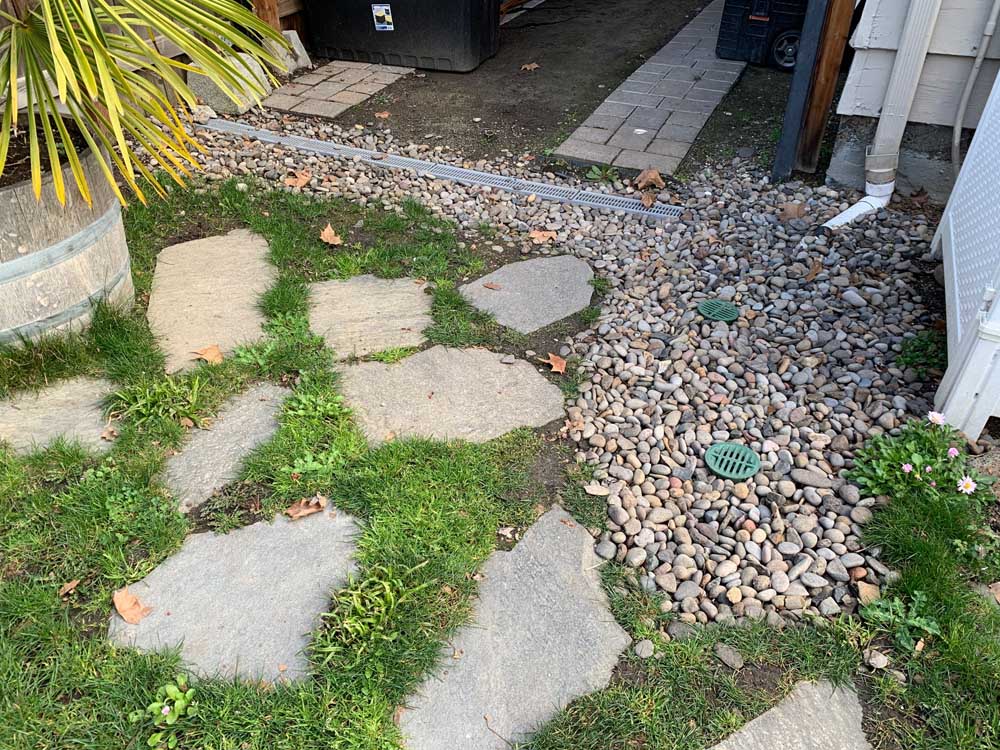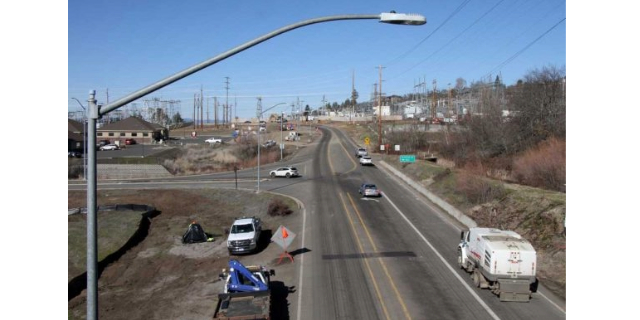GARDEN PLOTS: Are you and your garden ready for stormwater runoff?
Published 7:00 am Wednesday, February 28, 2024

- Once the author knew how stormwater moved through the backyard, she was able to install a drainage system at strategic points along its path.
“When people think of climate change, they anticipate hotter summers and potential water shortages but, perhaps surprisingly, a distinct excess of water in the garden will be one of the main problems in our climate-changed future, alongside coping with summer drought.”
Trending
— Sally Morgan and Kim Stoddart, “The Climate Change Garden: Down to Earth Advice for Growing a Resilient Garden,” 2023
I remember sitting on my front porch a couple of years ago, watching an early July storm move slowly into the valley from the south. I had two thoughts: would we get any rain from it to ease our usual summer drought, and how many wildfires would be sparked from the lightning?
Two hours later, my whole family was battling a deluge as it cascaded down our sloping driveway from the street and flooded the garden and a studio in the backyard. All we could do was try to divert some of the torrential rainwater away from the building and vegetable beds with boards.
Trending
After an hour the rain stopped, and we were left with a huge mess to clean up in the yard and the apartment. It took days for the rainwater to seep into the overly saturated ground and several hundred dollars to replace the waterlogged flooring in the studio. We lost most of our vegetable crops in the beds that were overwhelmed with stormwater.
I don’t think it rained another drop for two months after that, and Medford reported record-breaking temperatures just a few weeks later. That was the summer it really hit home — literally — how vulnerable we are to erratic weather caused by climate change.
According to the Intergovernmental Panel on Climate Change’s Sixth Assessment report, “The Physical Science Basis” (2021), “Evidence of observed changes in extremes such as heatwaves, heavy precipitation, droughts, and tropical cyclones, and, in particular, their attribution to human influence, has strengthened since AR5 published in 2014.”
In addition, the IPCC report states, “Continued global warming is projected to further intensify the global water cycle, including its variability, global monsoon precipitation and the severity of wet and dry events.”
So what’s a gardener to do? Authors Sally Morgan and Kim Stoddart offer several recommendations to strengthen the resiliency of our gardens in the face of severe flooding. First, observe how water from a downpour moves through the garden and where it collects. This is important information to know so you can effectively slow down the movement of water, giving it a chance to seep into the ground and reduce runoff.
One of the major strategies we’ve used to slow down rainwater from the street is building a berm across the length of our front yard. Trees, shrubs and herbaceous perennials planted on the berm provide an attractive screen from the road, and the plants benefit from the accumulated moisture. Morgan and Stoddart note that berms can also work in tandem with swales, or ditches, that are dug along the contours of a garden or landscape. Swales fill with water during heavy rains, thus slowing down water movement even more.
Dry creek beds are another landscaping strategy to slow water movement. We have a dry creek bed that winds through the backyard, following the trajectory of water during a downpour and ending at a depression that collects runoff. The sump pump underneath our house drains into the dry creek bed and adjacent planted berm.
Rain gardens serve a purpose similar to dry creek beds, berms and swales. Rain gardens are created by digging a shallow depression at least 10 yards away from the house, partially backfilling it with well-draining soil, and putting in plants that tolerate temporary flooding. The OSU Extension Service provides instructions for how to build a rain garden and a listing of suitable plants.
Permeable paths and surfaces are another effective way to slow down stormwater. We removed our concrete driveway and replaced it with gravel that allows water to seep through the gaps. In the backyard, we took out a concrete patio and replaced it with raised vegetable beds surrounded by a gravel path.
Speaking of vegetable beds, we built 24-inch-tall raised beds that are not only less susceptible to flooding but also easier on my knees and back.
Morgan and Stoddart discuss the use of French drains and drain fields in climate-smart gardens. Once we understood the movement of heavy rainfall on our property, we dug drainage systems at different points en route to the dry creek bed in the backyard and in front of the house for extra flood protection. There’s also a drain next to the studio that holds water from the downspouts.
Rain barrels and storage tanks could also be outfitted to capture runoff from roofs. We have a rain barrel that catches runoff from the awning of our camper, and I’m always amazed at how much we get from just a little bit of rainfall. The Jackson County Master Garden Association uses a large-capacity rainwater harvest system to maintain the native plant nursery on the Southern Oregon Research and Extension Center campus in Central Point. Informational tours are available to the public periodically.
Two years ago, when I was standing ankle-deep in water in my backyard, I felt so vulnerable to the effects of climate change. Reading “The Climate Change Garden” has helped me to increase my level of preparedness for the next flood, the next cold snap, the next heatwave and the next wildfire.









